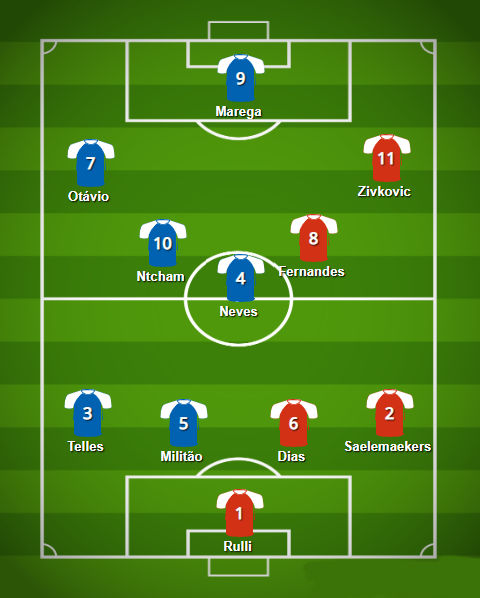INTRODUCTION
Like all FM’ers I go through an evaluation process for my entire squad at the end of the year. While I am constantly evaluating my squad throughout the season, that work is largely informal with a few just a few notes jotted down here or there in a spreadsheet or notebook and it might be about form, injuries, tactical compatibility, or just how annoyed I am at their stupid haircut. At the end of the season when the ref has blown full time and the lads are pissing in the communal bath, I start my formal review.
Many folks just glance over their squad and chuck a few on the transfer list and have a fairly fluid approach to squad management but I’m a nerd so I’m looking for any excuse to crank out a spreadsheet! The end product will be a final decision on whether a play stays, gets a new contract, is transitioned to a new position, dropped up or down the pecking order, or ultimately sold to whoever will take on our rejects.
Like the tactical development process in my last blog for WSFM, this is a top-down process that is ultimately driven by the ambitions and status of the club and its finances. Budgets, performances, age, positional depth/redundancy, and overall squad numbers will be the core determining factors. Team Reports, Coaching Staff Opinions and Analysis will also be factored into the equation for every player. This forms our strategy for the post-season for that player. Whether we are successful or not is obviously not guaranteed as situations like selling a player or trying to get them to agree to a new contract with the club aren’t a given, but we at least have a plan.
THE PROCESS
I go to my general custom Squad View (see below) that I use for a lot of decision making during the year, and use the Print Screen to Web Page function to create a HTML file that I import into a Google sheet.
I then make some formatting changes to the spreadsheet and add several columns to record various notes such as:
Tactical Role - noting what role in our tactics the player was used for.
KPIs - any additional Key Performance Indicators I want to include such as pass completion ratio. Our KPIs may change from team to team or season to season.
Future Squad Status - whether I wish to upgrade/downgrade the player in the pecking order compared to his current squad status
Managers Notes - my general notes on the player. I may have some notes that I have taken throughout the season and consolidate them here. I will usually note this on my own opinion before I consider the Coaches Reports.
Coaches Notes - anything I consider worth noting from their Coach Report or Team Report specific to the player
Decision - the desired outcome from the above (e.g. sell the player, re-sign at all costs, reduce squad status, etc)
Next Season Depth Chart - this is a very basic squad depth chart similar to the one on the Team Report page noting the number of players I will have next season for each position. Utility players will be counted in each spot they can play but I’ll include a note as a reminder.
Budget - I include the available transfer budget for next season along with our committed wages and wage budget for next year.
Transfer Priorities - arguably the key output of this activity - how many players do we need to buy for each position? This keeps me focused on the actual need rather than merely chasing the best players available
I then go ahead and assess every player in the first team squad and then repeat the process for both the Under 23’s and Under 18’s, but usually in less detail. It’s a process that usually takes me 1-2 hours.
I go through each players Profile screen and check the attributes including whether they’ve improved or decline, match ratings and comparisons. I will also check how they performed against any KPIs that I have established. For Sunderland, it was Pass Completion %. I make my Managers Notes and flag (highlight) certain data points such as contract end dates to act as prompts to consider when I’m doing the final assessment on the player.
For those players retiring, already sold, on loan and returning to their parent club, or already decided to be released, I skip the remaining steps for those players and simply strike-through the data and highlight the row in grey.
Here’s a working example of this seasons assessment for Sunderland:
As you can see it’s a bit of a shit show at Sunderland! My recent blogs cover this but we took over and immediately oversaw a massive clearout in the January window to sort out the finances. We then had a threadbare squad just to get us through the rest of the season where we ended up in in the Championship and knocked out on pens in the playoffs. We’re essentially hitting the reset button, keeping a few solid squad players and starting again. At least we now have some budget room, an excellent crew of coaches and scouts on board so let’s get to work!
Sparky, Out!





